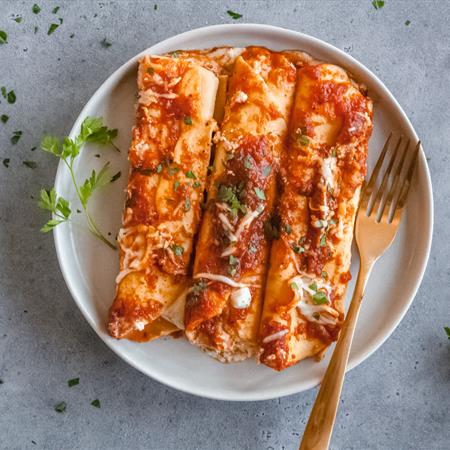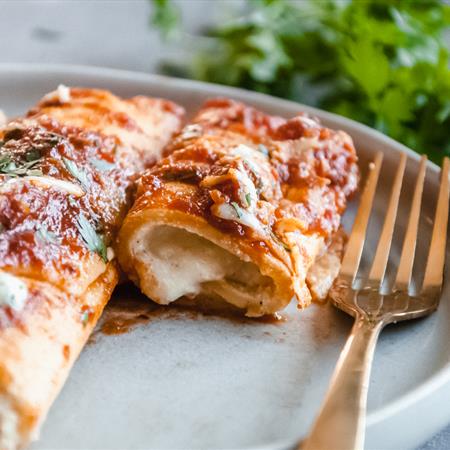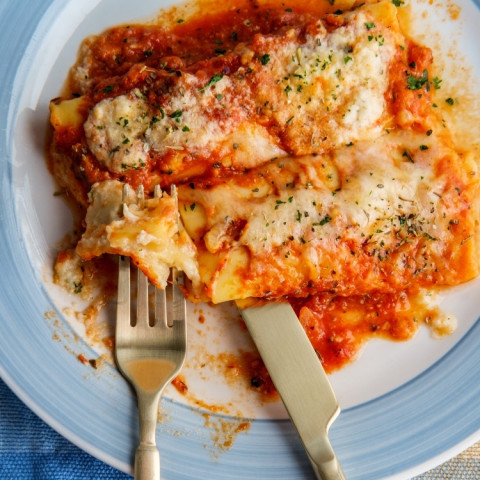How to Make Gluten-free Manicotti & Tips for Gluten-free Cooking
In recent years, many of us have been turning to gluten-free diets for various reasons. Maybe you have an intolerance or you’re just trying to cut out excess carbs. Whatever the reason, living a gluten-free lifestyle doesn’t mean you have to miss out on all the foods you love… like pasta!

Gluten-free flour alternatives have come a long way—it’s easy to recreate your favorite recipes using gluten-free flour following a few tips and tricks. In many cases, you won’t even notice the difference from all-purpose flour. And, sometimes, you may even prefer the taste of gluten-free flours.
Comparing Gluten-free Flours
There’s a wide variety of gluten-free flours on the market these days. How do you know which one to choose? We’ll go over some of the most popular options:
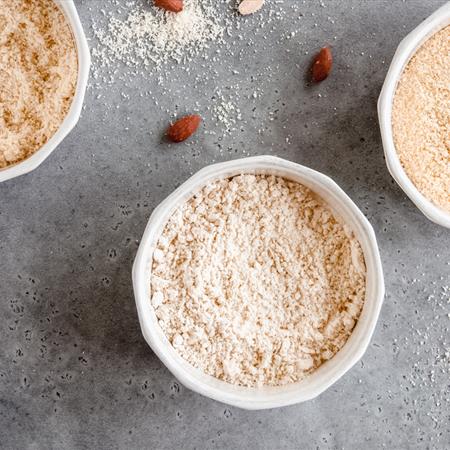
Almond Meal:
Almond meal or almond flour is our number one choice for this Gluten-free Manicotti recipe. It offers a nutty flavor that we enjoy in many baked goods. It works well in both sweet and savory applications, and we like the taste for this manicotti recipe specifically.
For this recipe, we recommend trying to find a super-fine or finely ground almond meal, if possible. Some almond flour products are a little coarser than others, so it may not be as smooth of a final product if you use a coarsely ground meal.
Almond flour is available blanched or natural. The difference is that natural almond flour (or almond meal) is made from raw unpeeled almonds, while blanched almond flour is made from almonds that have been blanched and peeled. For this reason, almond meal looks a bit more rustic. However, it won’t make much of a difference in terms of taste or texture, so either one works just fine.
Gluten-free Flour Blends:
If you have a nut allergy or can’t find almond flour, gluten-free flour blends are your next best choice for this manicotti recipe. Keep in mind that different brands have different mixtures of gluten-free flours and starches, so they all work a little differently.
For example, 1-to-1 gluten-free flour blends are designed to work most similarly to all-purpose flour in the majority of applications. They usually contain a bit of xanthan gum to provide structure and elasticity to gluten-free baked goods.
Rice Flour:
Rice flour is simply ground rice, which is a naturally gluten-free product. It can be made from white rice or brown rice, which will affect the taste of what you’re cooking. Brown and white rice flour are often a major component in gluten-free flour blends, but it can also be used on its own as a substitute for wheat flour.
Corn Flour:
Corn flour is also a great option for gluten-free baking. It differs from corn meal in that it’s a finer grind and lighter texture but has a similar taste since they’re both made from corn. It will add a slight yellow hue and a subtle sweetness to whatever you’re making.
How to Make Low-Carb, Gluten-free Manicotti
If you haven’t tried it, manicotti is a pasta dish made with large sheets of noodles that are filled with a cheesy ricotta filling and rolled into tubes to encase that filling. I like to think of it as lasagna meets enchiladas, since the taste is similar to lasagna, but the assembly is more similar to enchiladas. Manicotti is also similar to stuffed shells, but way easier to make!
Step 1: Make the “Noodles”

The manicotti noodles are actually very similar to crepes or thin pancakes. You start by making a pancake with the batter about 6 to 8 inches in diameter. It’s best to use a nonstick pan set over medium-low heat since we’re not trying to brown the pancakes at all, just set them into place. It takes just a minute or two to set. If it starts to brown, just lower the heat.
These pancakes or “noodles” don’t need to be perfectly round! Since the batter is thin, they tend to run into a blob shape, but you won’t be able to tell once they’re rolled up. And if it rips a little while flipping, it will still work just fine to roll. The filling may leak a little, but it will mostly stay in place.
Since we are using almond meal or a gluten-free flour, here are a few tips for optimal results:
Items made with gluten-free flours tend to be a bit grainy. One way to avoid this is to let the batter rest about 20 minutes before making the noodles. Gluten-free baking recipes often call for batters to be rested for some period of time prior to cooking for this reason.
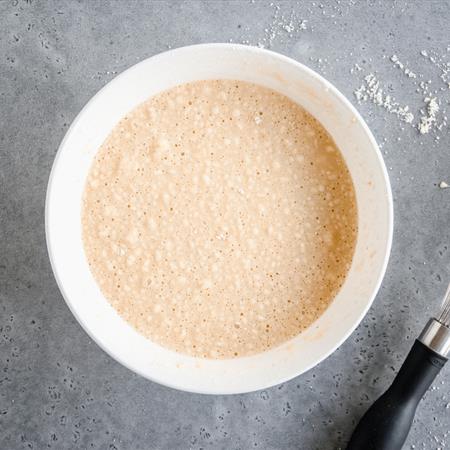
Be extra careful when flipping the “pancakes.” Since gluten-free flours don’t contain gluten, they are missing that elasticity that gives a little more stretch to glutinous baked goods. Therefore, gluten-free noodles will break more easily. Use extra nonstick spray if you find them sticking to the pan at all.
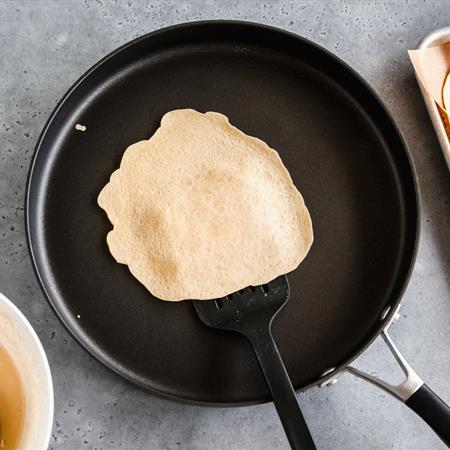
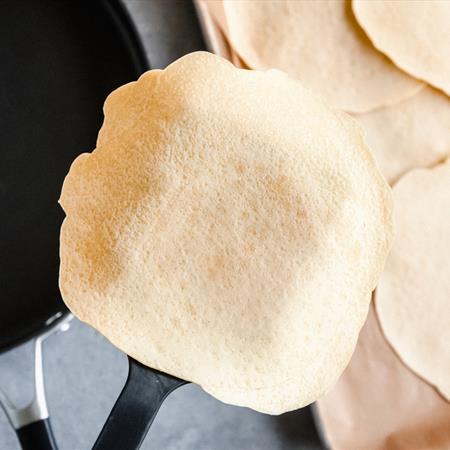
One positive thing dealing with gluten-free flour is that you don’t have to worry as much about overmixing like you would with a wheat flour. Whisk the manicotti batter vigorously until the batter is smooth. You don’t want any lumps or pockets of dry flour.
Step 2: Make the Filling
Our manicotti filling is a vegetarian blend of cheeses including ricotta, mozzarella, and Parmesan. Then, we add some fresh herbs and spices, and eggs to bind it all together. You can add meat if you wish, or other cheeses and herbs, but the basic filling recipe is delicious just as-is!
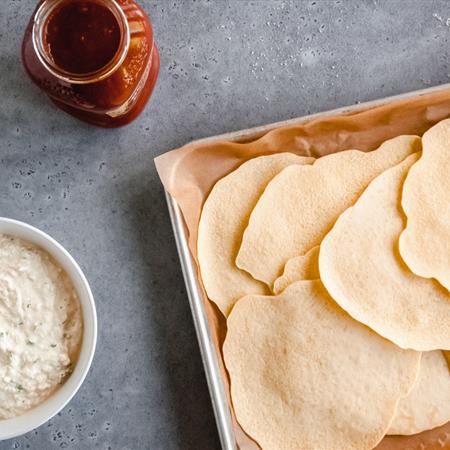
If you were to add meat or a vegetable like spinach that would release water when cooked, these additions should be pre-cooked and cooled completely before adding to the filling mixture.
Step 3: Assemble & Bake
Before beginning assembly, grease the pan thoroughly with nonstick spray so it doesn’t stick. Then, working with one noodle at a time, spread a line of filling down the center and roll it up to enclose, leaving the ends open. Place the manicotti in the prepared dish snuggled next to one another with the seam-side down to keep them enclosed.
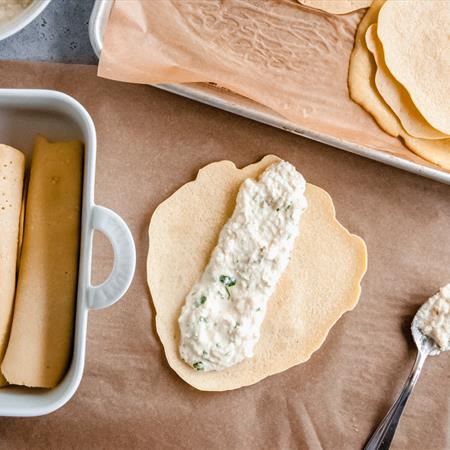
Remember, if the noodles tear slightly while cooking or filling, they are still fine to use in this recipe. The filling may leak a tiny bit, but you probably won’t even be able to tell once you top with the sauce and cheese and bake it.
We chose to garnish the manicotti with a little fresh chopped parsley after baking. Since you’ll likely have some parsley leftover from the filling, it makes for an appealing garnish.

That’s it, now you have delicious gluten-free manicotti! These tips for gluten-free cooking apply to many recipes, so don’t stop at pasta! There are lots of other foods—like cookies and even bread—that you can also make gluten-free with just a few easy tweaks.
